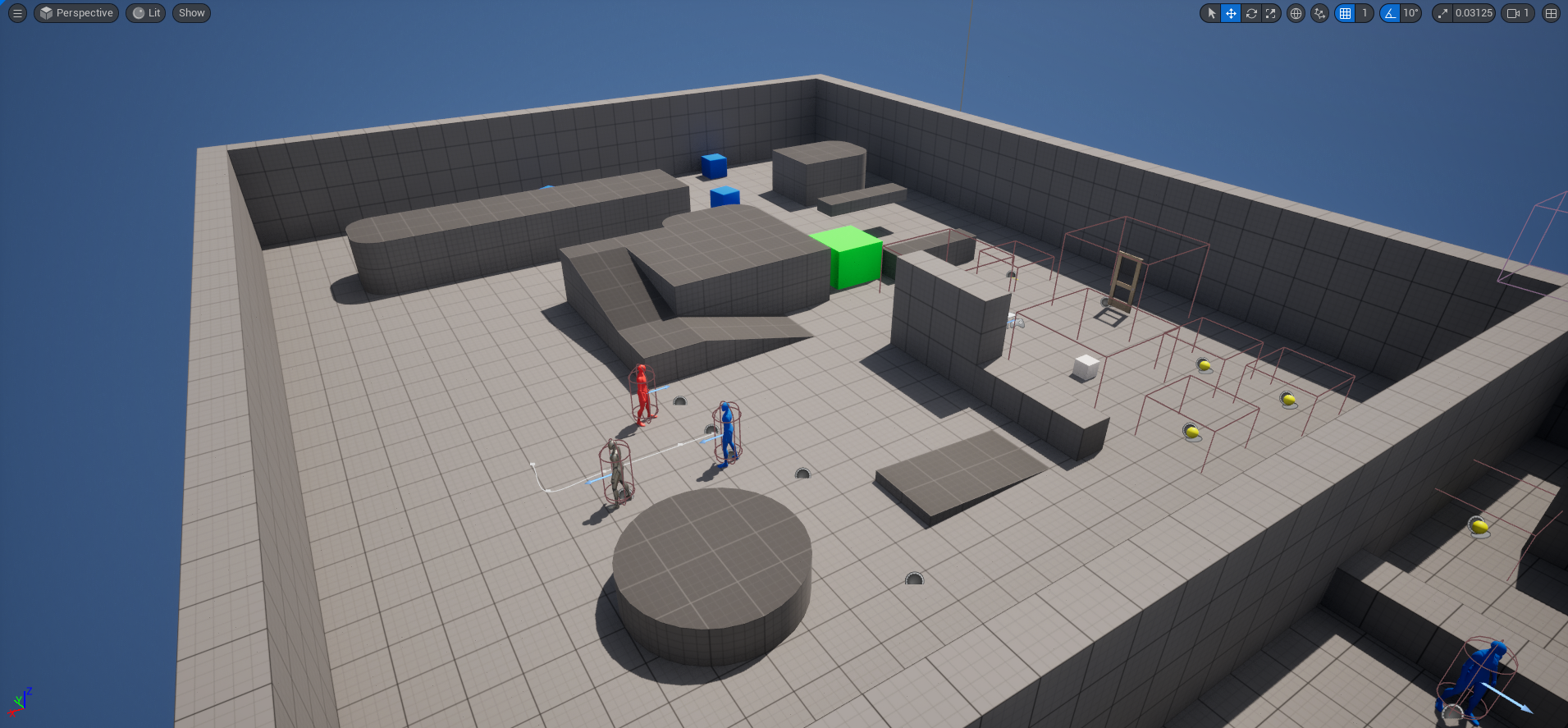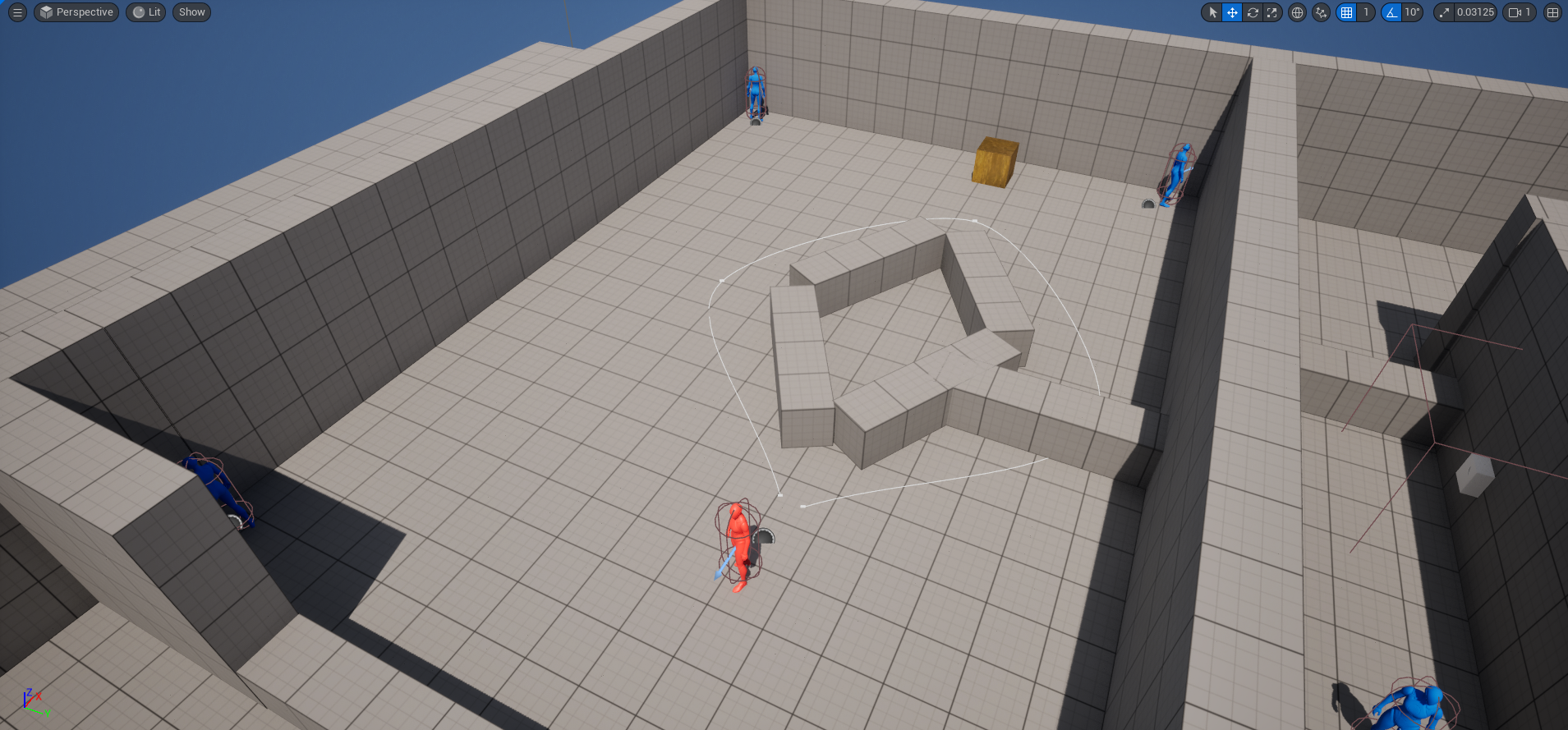Process
Planning
Building enemy types for your stealth game needed to be planned carefully because in this genre the player is given a lot of tools and the enemy needs to act consistently but believable. I began with making a basic AI enemy that could do the simple things like detect the player and run to their location when spotted. That brain was the foundation for the other enemy types that followed. With these AI systems there had to be ways for the player to manipulate them. So, you can't lock the AI into only detecting player-specific sounds, but a sound that the player and other objects emit so the enemy treats both sources as equally suspicious.
Iteration
Every week I had a stand-up meeting with my team where we discussed our progress and strategized how to expand on our work. We started with the simple features such as seeing and hearing. I made sure that every feature had a way to be interacted with by the player. For example, when the AI can hear, I programmed a distraction tool, the player could also get slightly spotted by the guard to lure the AI towards them. With so many enemies and different types of enemies in the level I designed a system where they could communicate with each other. If one saw the player, they could tell others nearby. Believable were implemented as well such as the enemy searching the area for a time if they chase and lose the player before going back to patrol.
Outcome
The end result was a complex connection of systems that worked with each other to create a tense experience.


